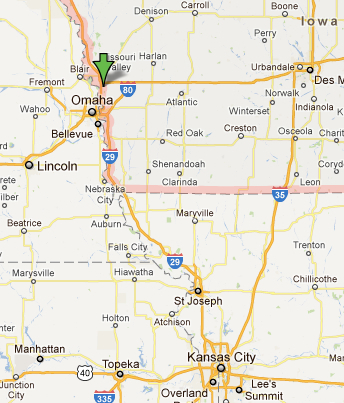
Does Google want to provide some kind of IP video service for the people of Kansas City, Kansas and Kansas City, Missouri? We've heard the rumors. Here's another hint that they may be true after all: the Federal Communications Commission has received and reviewed an application from Google Fiber for a fixed satellite, receive-only earth station to be located in Council Bluffs, Iowa—about 200 miles northwest of the two Kansas cities. And Google Fiber is a subsidiary of Google; it's the company that is building out a 1Gbps fiber-to-the-home testbed for the location in question.
Google announced the whereabouts of its testbed experiment ten months ago. The service will provide "open access" to any Kansas City area ISP wanting to use Google's pipes, charging fees similar to current rates for slower connections in the region. Last Monday, Google's Kevin Lo noted on his Google Fiber blog that "starting today, we're ready to lay fiber."

But perhaps Google plans to roll out more than that. Google Fiber's application to the FCC reads as follows:
Google Fiber, Inc. seeks to register a C?band receive?only earth station and a Ku?band receive?only earth station in Council Bluffs, Iowa. The earth stations will be located adjacent to each other and will be used to provide analog and digital audio, data, and video services.
No primary users
The C-band is accessed by satellites in the 4GHz area for uplinks and 5-6GHz zone for downlinks. It is deployed by 24/7 satellite television communications networks. The Ku band operates in a higher range, from 12 to 14GHz, but it is also used for satellite TV.
On February 2, the FCC partially turned down the request, but for technical or administrative reasons that suggest that another filing could prevail, or that Google Fiber might be able to pursue the project anyway.
First, the agency's Satellite Division dismissed the need to apply for a license for the Ku band. "The Commission has previously determined that it is not necessary to license or register receive-only earth stations operating in the 11.7-12.2 GHz frequency band because there are no other primary users in this spectrum," the FCC told Google Fiber.
Second, the Commission denied Google the right to receive ALSAT ("All US-Licensed Satellites") via various requested frequencies in the C and Ku bands. These apparently do not belong to the "conventional" bands allowed this privilege by the FCC. Those earth stations that do provide fixed-satellite service in the appropriate bands can access any U.S. satellite "without additional Commission action," the letter said.
"Dismissal of these requests is without prejudice to consideration of the request to register the receive-only earth station in the conventional C-band," the agency's response concluded.
As we build . . .
In addition, the FCC had an auditor vet the application for interference problems. None were found. The Council Bluffs site "will operate satisfactorily with the common carrier microwave environment," the audit determined. "Further, there will be no restrictions of its operation due to interference considerations."
So some of Google Fiber's request appears to have received a green light—one that might bloom into a video service, depending on what is planned.
We contacted Google about the application and asked for details. "We're still exploring what product offerings will be available when we launch Google Fiber in Kansas City," a Google spokesperson told Ars.
Listing image by Photograph by photoguyinmo
reader comments
34